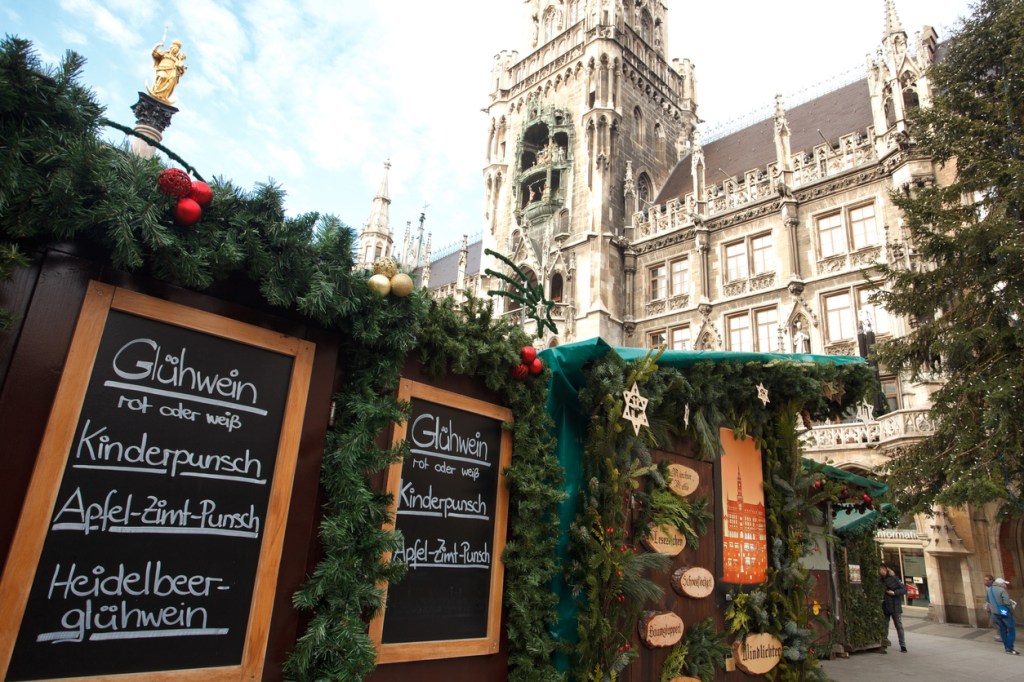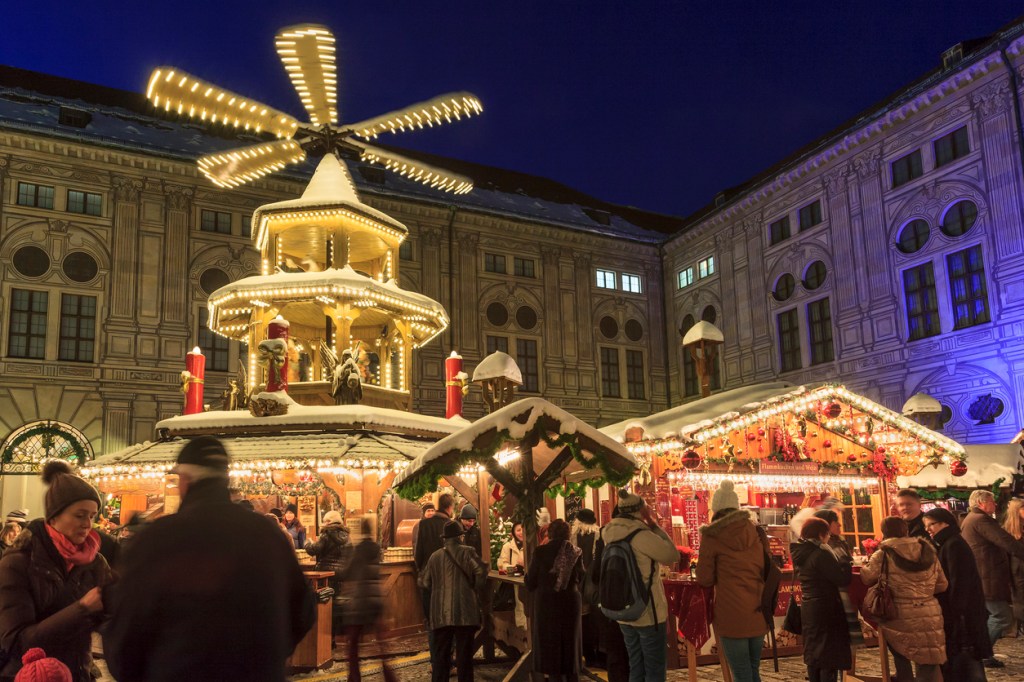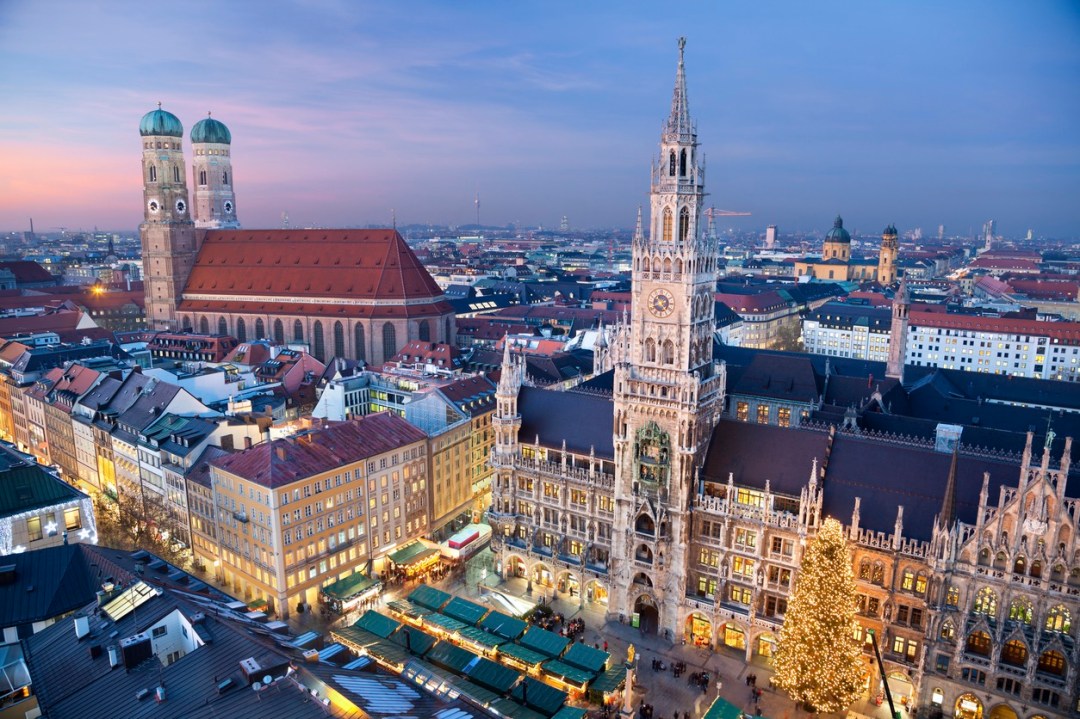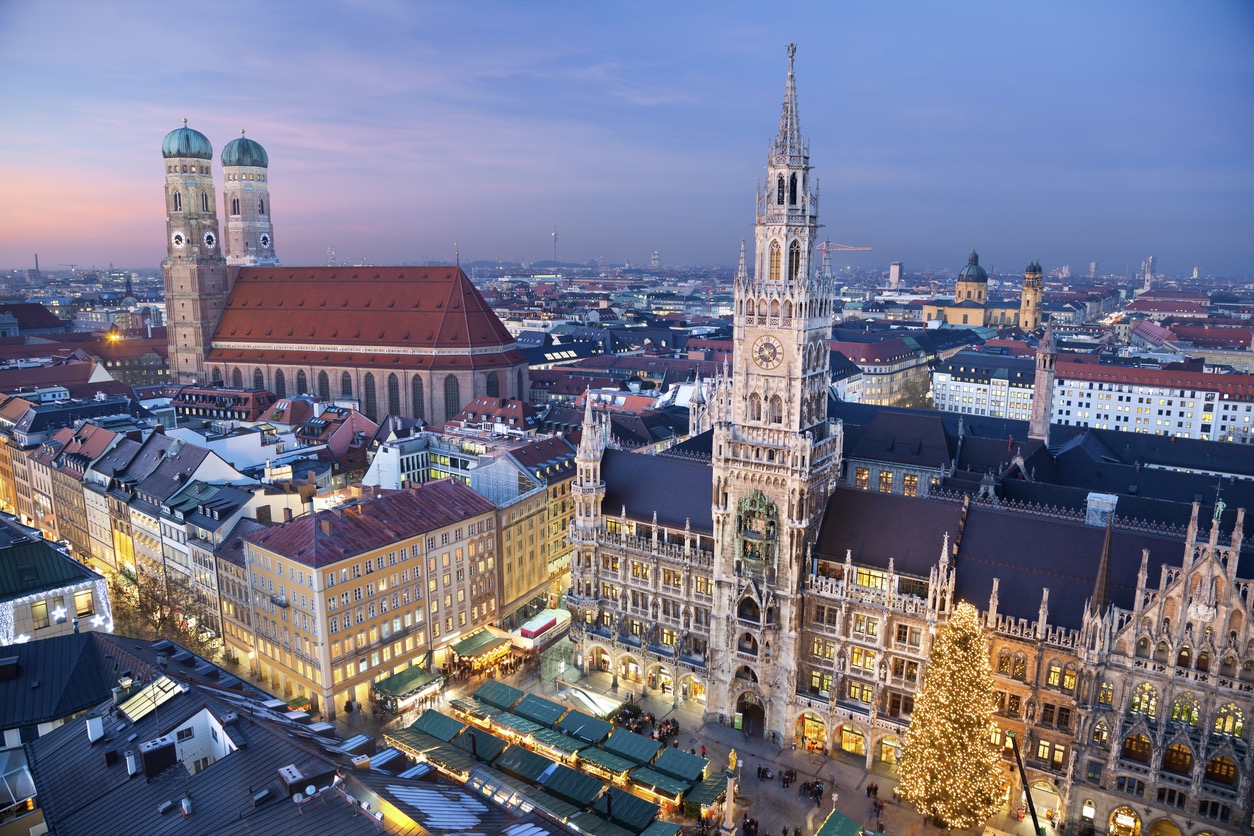Ambling through the Christkindlmarkt, Munich’s biggest Christmas market, feeling distinctly tipsy after my third (or maybe my fourth?) mug of Glühwein, I experienced a strange sensation, something I hadn’t felt in ages. For the first time in a long while, I realised I was feeling rather festive. Back in Britain, I’m the archetypal Christmas grouch – but leave me in a German Christmas market for a few hours and I become a big kid again.
This is the first year since Covid that Munich has been able to mount a proper Christmas market season. That might not sound like such a big deal to Brits, but it’s headline news in Bavaria. Like the Oktoberfest, Munich’s Christmas markets are one of its most cherished traditions – a chance to meet up with friends and colleagues (or, even better, perfect strangers) and drink too much and stuff your face and do some Christmas shopping while you’re at it. Buying presents on Amazon simply isn’t the same.
After 30 years of intensive research, traipsing (or sometimes staggering) around more German Christmas markets than I can remember, I’ve come to the conclusion that they’re actually all pretty similar – and that’s what makes them so welcoming. Sure, there are some regional variations – but anywhere in Germany, you’ll find the same folksy stalls selling the same Teutonic staples: handmade children’s toys and intricate Christmas decorations, Stollen and Lebkuchen… for Germans, this familiarity is deeply comforting – a precious connection with childhood memories of Yuletide past.

I’ve had some fantastic times in Christmas markets all over Germany, but my favourite place at this time of year is Munich. There are a dozen markets around town – more if you include the outskirts – and visiting a few of them is an ideal way to explore the city: the Weihnachtsdorf (Christmas Village) is in the Residenz, Munich’s royal palace; the cosy market in Haidhausen, one of Munich’s most attractive suburbs, gives you a glimpse of how the locals live. There’s even a medieval Christmas market, the Mittelaltermarkt in Wittelsbacherplatz. Yet there’s also lots of other stuff to see and do in Munich during Advent. More than any big city I know, it’s eminently walkable, and the best way to get to know the place is to simply wander round.
There are a dozen markets around town – more if you include the outskirts – and visiting a few of them is an ideal way to explore the city
The best place to begin is the Marienplatz, Munich’s bustling central square. From the rooftop of the Neues Rathaus, the city’s ornate town hall, you get a super view over Munich and the snowcapped Alps beyond. From here, it’s a short walk to the Residenz, where the Bavarian royal family lived until 1918. Meandering around its empty courtyards, it’s strange to think that barely a century ago, this flamboyant building was still full of life. Beyond the Residenz, Munich becomes a sea of green. Walk through the tidy Hofgarten into the wild Englischer Garten – so-called because of its naturalistic ‘English’ style, in vivid contrast to formal French gardens like Versailles.
Munich abandoned its autonomy as the capital of an independent kingdom when it was swallowed up by Bismarck’s Second Reich in 1871. However, 151 years later it’s still a seat of government, ruling over the largest of Germany’s 16 Länder – Freistaat Bayern, the Free State of Bavaria. Hence, it still has the look and feel of a capital city – the broad boulevards, the antique architecture, the haughty metropolitan elegance of its chic designer stores…

Yet on account of its compact centre and its intimate atmosphere, locals call it the Millionendorf, the village of a million inhabitants. This friendly ambience is manifest in its picturesque medieval Altstadt, immaculately restored after the devastation of the second world war. In Munich’s open-air market, the Viktualienmarkt, or in its countless kneipe and stube (pubs and bars), it’s quite normal to end up chatting with folk at the next table.
Beer is an integral part of daily life in Munich and the standard, without exception, is superb. However, visitors often forget that its many bierkellers also do great food. This carnivorous cuisine is hearty and nourishing, the menu is fairly finite (always a good indication of fresh ingredients), and the tagesmenu (plat du jour) is especially good value. Some locals drop in for a quick drink, but most make time for a sit-down meal. Diners tend to get a bit tipsy, but hardly anyone gets roaring drunk. The robust décor is reassuringly traditional. There’s no Sky Sports, no muzak. The only background noise is the clatter of cutlery on crockery, and the hubbub of conversation.
Sightseers flock to the Hofbräuhaus, Munich’s most famous bierkeller, and although there’s nothing wrong with it, it’s inevitably become a tourist trap. For a more authentic experience, I like to head a bit further out of town. The Hofbräukeller and the Löwenbräu Biergarten are two of my favourites, but wherever you end up, you can’t go too far wrong. The bierkeller is a Bavarian institution. No one else does it quite so well.

This Bavarian gemütlichkeit even extends to Munich’s most prestigious grand hotel. The Bayerischer Hof is a historic landmark, a home from home for aristocrats, socialites and celebrities ever since it was founded way back in 1841. It has all the deluxe mod cons you’d expect from a five-star hotel but is refreshingly relaxed. With several stylish bars, and a nightclub in the basement, it’s what Germans call a treffpunkt – a lively meeting place for locals, as well as overnight guests.
And if you fancy a break from all that boozing, it’s easy to get out of town. One of Munich’s main attractions is its proximity to proper countryside. The lakeside resorts of Starnberg and Herrsching are both a short train ride from the city centre. Murnau and Kochel, in the foothills of the Bavarian Alps, are only a little further away. Set off early for Herrsching and you’ll have time to walk up to Kloster Andechs, a monastery in the hills above the Amersee, where they brew their own beer and dish up some fine Bavarian grub.
I normally fly to Munich – there are decent connections from most British airports with British Airways or Lufthansa. However, this time I had work to do in Paris, so I decided to take the train. I couldn’t believe how easy it was – less than six hours direct on a TGV from Gare de l’Est. On my last day in Munich, I left the Bayerischer Hof at 6 a.m., caught the 6.45 a.m. to Paris and then the 1.13 p.m. Eurostar to St Pancras. I was back in London before 3 p.m. and the Christkindlmarkt seemed a world away.
For more information about Munich click here, and for more information about Christmas markets throughout Germany click here.







Comments